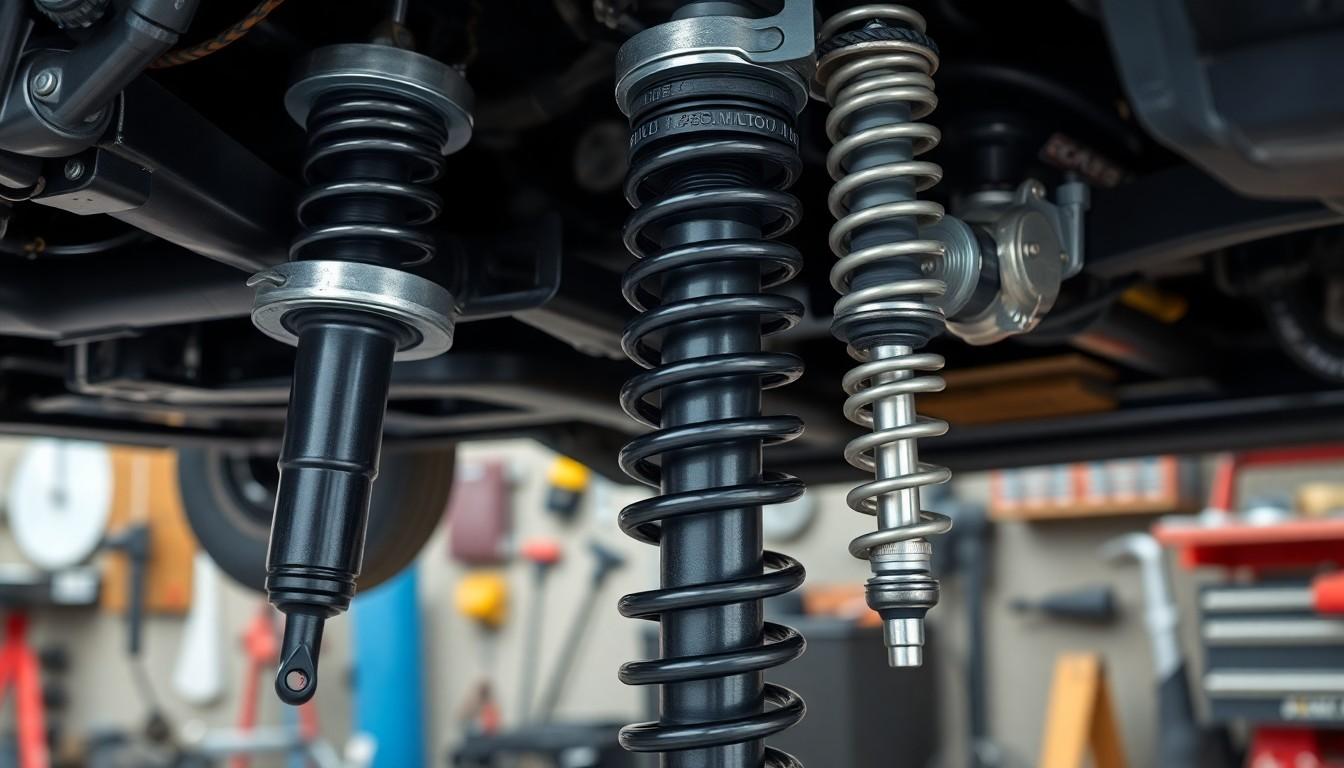Ever wondered what’s actually keeping your ride smooth when you hit those bumps in the road? Understanding whether your car has shocks or struts isn’t just mechanical trivia—it’s essential knowledge that impacts your vehicle’s handling, safety, and maintenance costs.
We’ll help you identify exactly what type of suspension system your car uses without requiring an engineering degree. Many drivers are surprised to learn their vehicle might have both components, depending on the make and model. By the end of this article, you’ll confidently know what’s underneath your car and why it matters when it’s time for repairs or upgrades.
Shocks vs. Struts: Understanding the Difference
Shock absorbers and struts serve different functions in your vehicle’s suspension system. Shocks primarily dampen spring oscillation and control excessive bouncing, while struts combine the shock absorber function with structural support for the vehicle’s suspension.
Many drivers confuse these components because they both help absorb road impacts. The key distinction lies in their design and purpose – struts are load-bearing components that support the vehicle’s weight and are integral to the steering system, whereas shocks only control spring and suspension movement.
Physical appearance makes identification straightforward once you know what to look for. Shocks appear as standalone cylindrical devices mounted alongside the springs, while struts form a complete assembly with the spring wrapped around them in a more compact unit.
The replacement cost between these components varies significantly. Strut replacement typically costs $450-$900 per pair including labor, which is considerably higher than shock replacement at $200-$400 per pair. This price difference reflects the complexity of strut assemblies and their structural importance in the vehicle.
Maintenance intervals also differ between these suspension components. Shocks generally last 50,000-100,000 miles depending on driving conditions, while struts commonly need replacement after 50,000-80,000 miles since they bear more weight and stress during operation.
How to Identify if Your Car Has Shocks or Struts
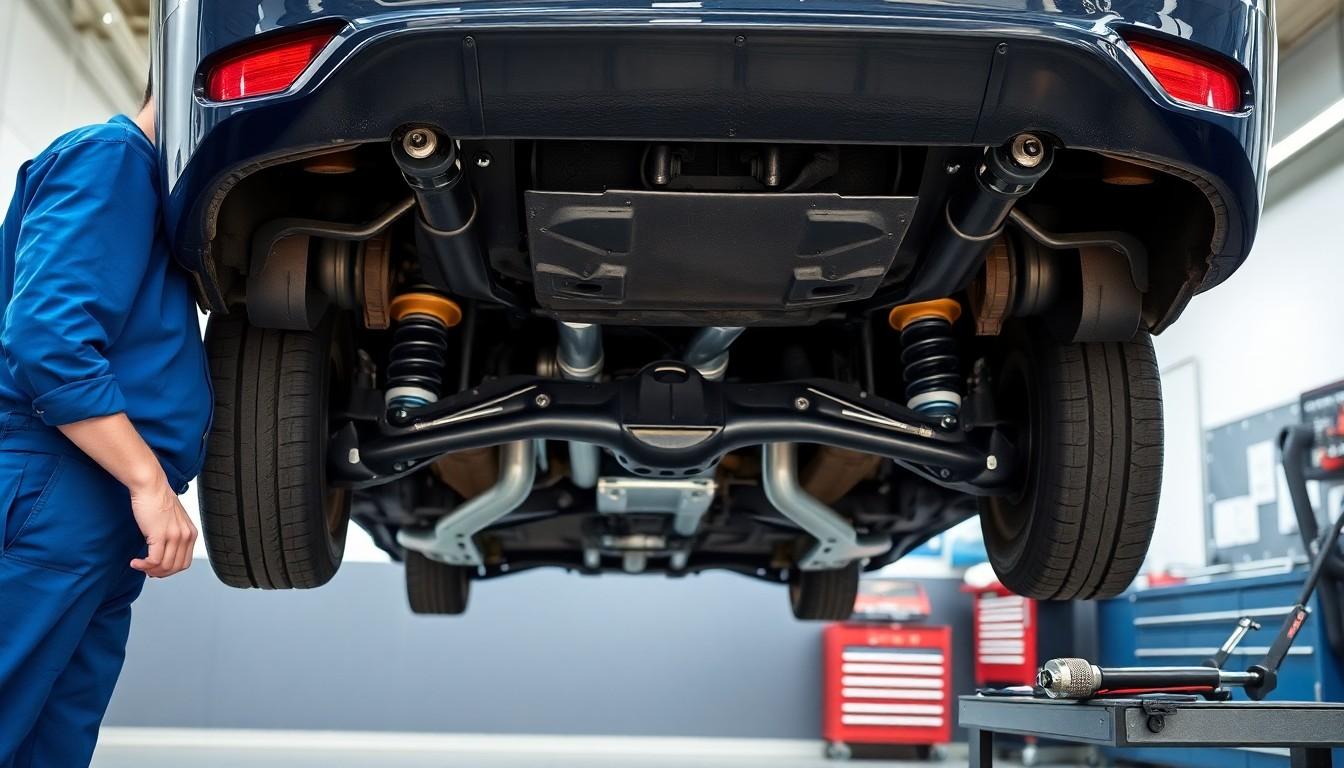
Identifying whether your car has shocks or struts doesn’t require advanced mechanical knowledge. With a few simple observation techniques and resources, you’ll quickly determine your vehicle’s suspension type.
Visual Inspection Methods
Visual inspection offers the most direct way to identify your suspension components. Shocks appear as standalone cylindrical devices mounted between the frame and suspension, featuring a simpler design without an integrated spring. Struts, conversely, present as more complex assemblies that include a spring, shock absorber, and additional structural components like mounts, bearings, and bushings in one compact unit.
Examine your car’s front and rear suspension carefully. MacPherson strut suspension systems, common in many modern vehicles (especially front suspensions), combine the shock absorber and spring into a single unit. Your car likely uses shocks rather than struts if you notice the coil spring and shock absorber exist as separate components in the suspension system.
Consulting Your Owner’s Manual
Your vehicle’s owner’s manual contains exact information about your car’s suspension system. Look through sections related to suspension, steering, or maintenance to find direct references to shocks or struts. Many manufacturers clearly state which suspension components are used in different areas of the vehicle.
The manual typically includes detailed diagrams and illustrations of your vehicle’s suspension system. These visual aids help pinpoint exactly what components are installed on your exact make and model. If you’re still uncertain after reviewing your manual, consulting with a professional mechanic provides a definitive answer based on their experience with your vehicle type.
Common Vehicle Suspension Configurations
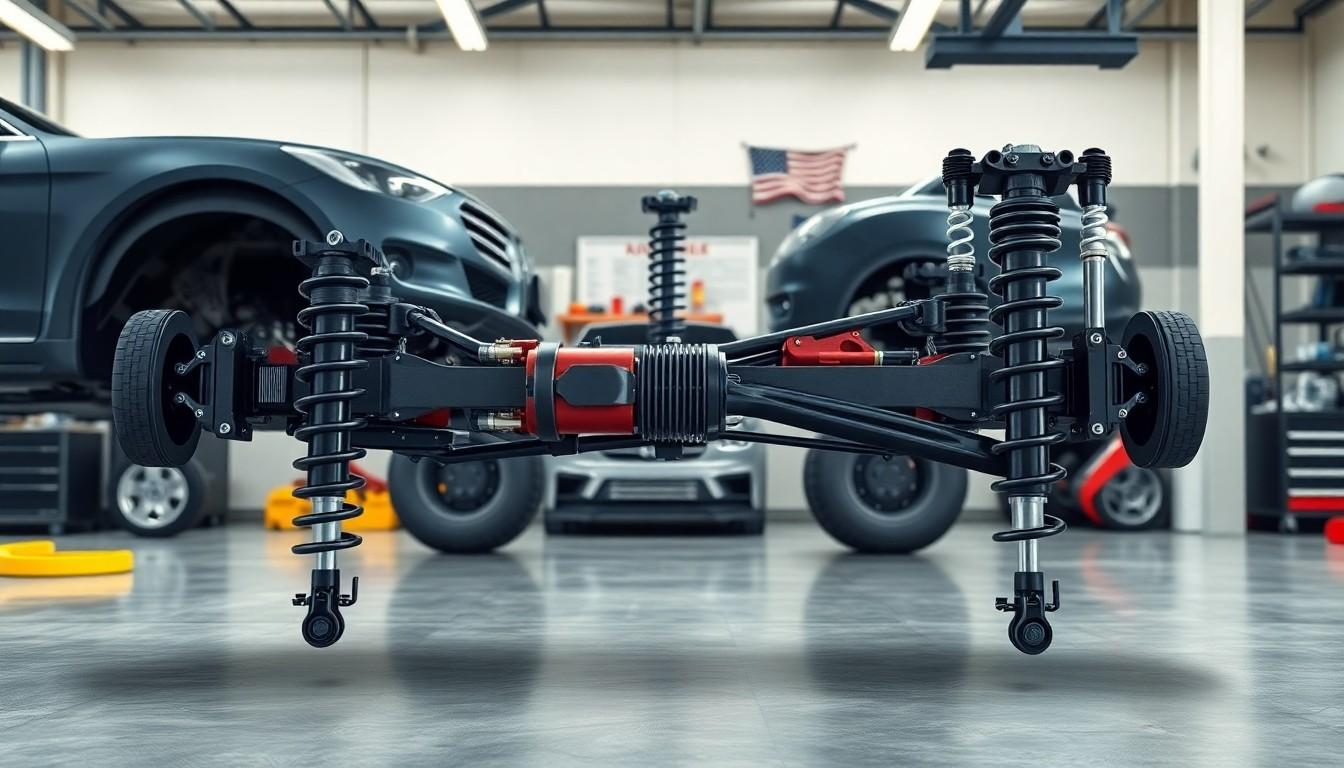
Vehicle suspension systems vary widely across different makes and models. Understanding these configurations helps identify whether your car uses shocks or struts in different positions.
Front Suspension Setups
MacPherson strut suspension dominates front-wheel drive vehicles, compact cars, and many sedans. This popular configuration integrates a coil spring, shock absorber, and strut housing into one assembly. The coil spring supports the vehicle’s weight while the shock absorber dampens suspension movement. MacPherson struts eliminate the need for upper control arms and ball joints, creating a more compact suspension system that ensures stability and proper wheel alignment.
Double wishbone suspension represents another common front setup, especially in performance and luxury vehicles. Unlike strut-based designs, these systems typically use separate shocks rather than integrated struts. Shock absorbers in these configurations work alongside independent coil springs and control arms to provide enhanced handling characteristics. Many manufacturers prefer this design for its superior balance between ride comfort and performance capabilities.
Rear Suspension Setups
Multi-link suspension systems appear frequently in modern vehicles, accommodating either shocks or struts depending on design priorities. Some cars employ rear struts similar to front MacPherson setups, particularly in vehicles with independent rear suspension focused on space efficiency. Independent rear suspensions often feature separate shock absorbers and springs to optimize both ride quality and handling characteristics while minimizing intrusion into cargo space.
Live axle suspensions, common in trucks and some SUVs, predominantly use shock absorbers rather than struts. These robust setups pair shocks with either leaf springs or coil springs to control the movement of the solid rear axle. Leaf spring configurations provide excellent load-bearing capacity for heavier vehicles, while coil spring arrangements with separate shocks deliver improved ride comfort. The absence of struts in these designs reflects their focus on durability and simplicity rather than space efficiency.
Signs Your Shocks or Struts Need Replacement
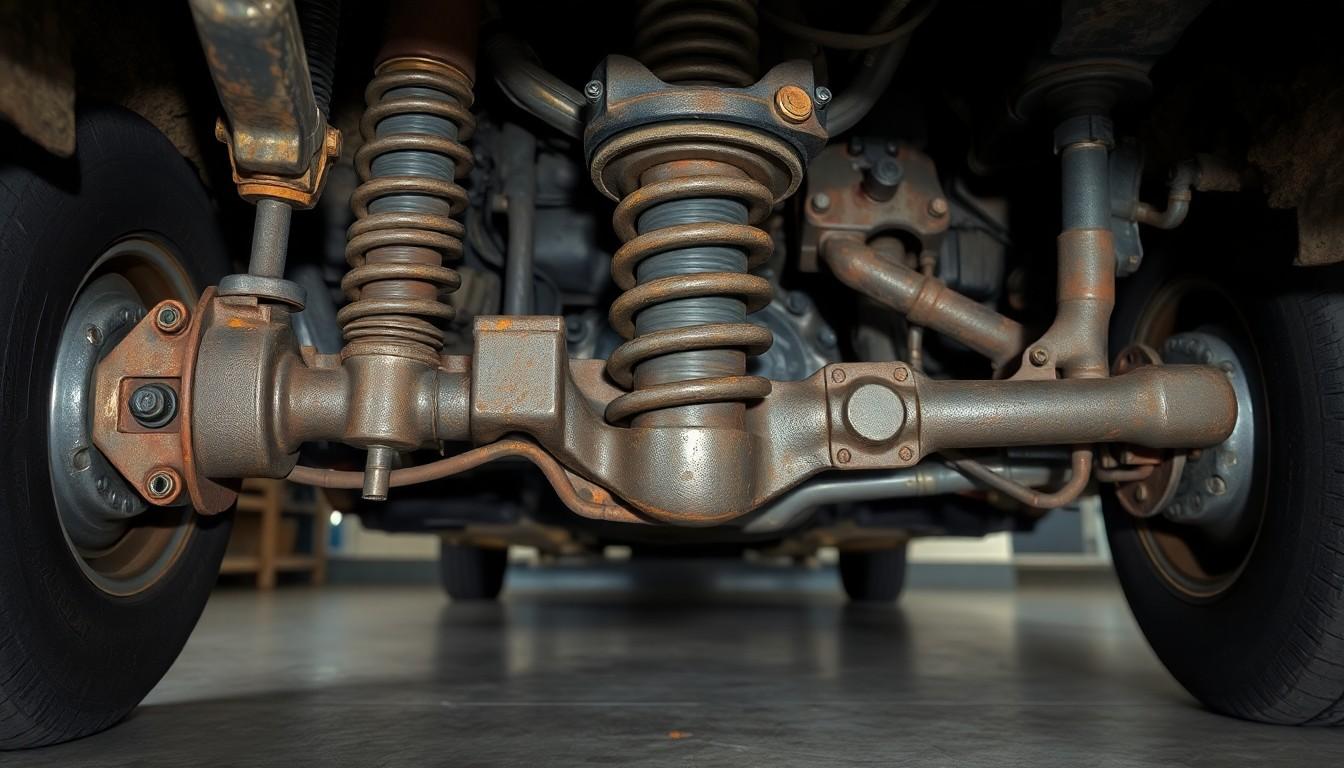
Your car’s suspension components don’t last forever. Recognizing the warning signs of failing shocks or struts helps you address issues before they compromise safety and performance.
Performance Symptoms
Poor suspension performance is often the first indication of worn shocks or struts. A car that bounces excessively after hitting bumps suggests dampening capability has deteriorated. Noticeable swerving or drifting during turns or when braking indicates the suspension isn’t maintaining proper stability. Unusual vibrations transmitted through the steering wheel or seat occur when shocks or struts no longer absorb road irregularities effectively. Longer stopping distances can also result from compromised suspension components that fail to keep tires firmly planted on the road. Premature or uneven tire wear patterns frequently develop when suspension alignment isn’t properly maintained due to failing shocks or struts.
Visual Warning Signs
Several visible indicators can confirm suspension component failure. Fluid leakage around shocks or struts is a definitive sign of internal seal damage. Physical damage like bending, denting, or excessive rust on these components compromises their structural integrity. Uneven tire wear—particularly cups or scallops on the tire surface—often results from bouncing caused by ineffective shock absorption. A simple bounce test reveals excessive suspension movement when you press down firmly on your vehicle’s corner and release—if it bounces more than 1-2 times, the dampening components likely need replacement. Sagging vehicle corners or one side sitting noticeably lower than the other suggests strut or spring failure in that area.
Why Knowing Your Suspension Type Matters for Maintenance
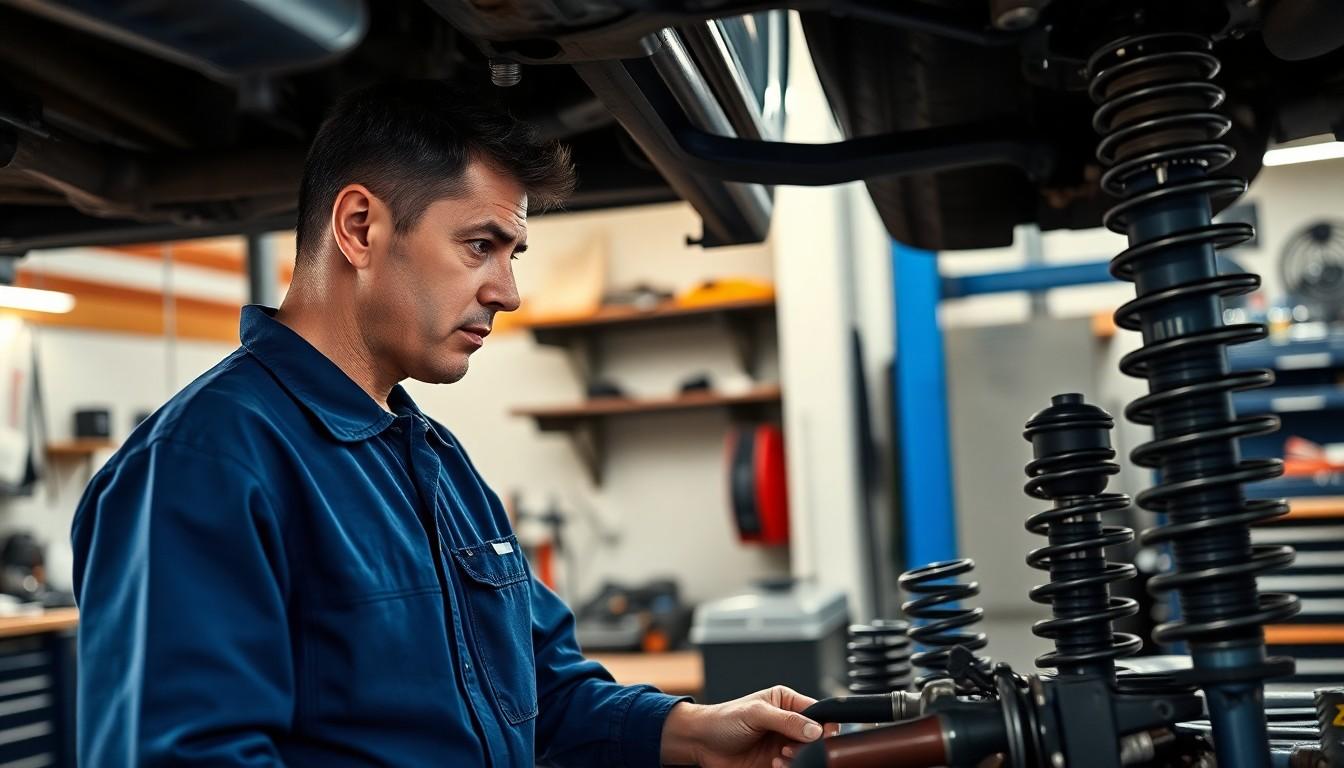
Understanding whether your car has shocks or struts isn’t just a matter of technical curiosity—it directly impacts your maintenance approach and costs. Replacement procedures differ significantly between these components, with struts typically requiring more labor and often involving the replacement of the entire assembly, including coil springs and mounts. Shocks, conversely, can usually be replaced as standalone units, making the job simpler and less expensive.
Proper diagnosis of suspension issues depends on knowing your vehicle’s exact setup. Problems with strut assemblies affect both dampening and the structural integrity of the suspension, potentially leading to steering difficulties and alignment issues. Identifying the correct component allows you to communicate more effectively with mechanics and understand the scope of necessary repairs.
The financial aspect can’t be overlooked when considering maintenance differences. Strut repairs and replacements generally cost more than shock absorber work due to their integral role in the suspension system. This price difference reflects not only the parts themselves but also the increased labor time required for strut replacement, which often involves specialized tools and safety precautions for compressing springs.
By correctly identifying your car’s suspension components, you’ll ensure appropriate maintenance schedules, accurate troubleshooting, and proper budgeting for future repairs. This knowledge empowers you to make informed decisions about your vehicle’s care and avoid unnecessary or incorrect service procedures.
Conclusion
Knowing whether your car has shocks or struts isn’t just about technical knowledge—it’s about being an informed vehicle owner. The suspension system directly impacts your driving experience safety and maintenance budget.
By checking your vehicle visually consulting your owner’s manual or asking a professional you’ll gain valuable insights into your car’s exact setup. This knowledge helps you anticipate maintenance needs identify warning signs and budget appropriately for future repairs.
We hope you now feel confident in understanding what’s supporting your vehicle. With this information you’re better equipped to communicate with mechanics make informed maintenance decisions and ensure your car continues to deliver a smooth comfortable ride for years to come.
Frequently Asked Questions
What’s the difference between shocks and struts?
Shocks primarily dampen spring oscillation and control bouncing, while struts provide structural support and are integral to the steering system. Shocks are standalone cylindrical devices, whereas struts are complete assemblies with springs wrapped around them. Struts serve a dual purpose by supporting vehicle weight and absorbing road impacts, making them more complex components.
How can I tell if my car has shocks or struts?
You can identify your suspension system through visual inspection – shocks appear as standalone devices while struts are more complex assemblies that include a spring. Check your owner’s manual for specific information and diagrams about your vehicle’s suspension system. If you’re still unsure, consult a professional mechanic who can provide a definitive answer.
How much does it cost to replace shocks versus struts?
Shocks typically cost $200-$400 per pair to replace, while struts are more expensive at $450-$900 per pair. The price difference reflects struts’ greater complexity and structural importance. Strut replacement also requires more labor as they’re integral to the steering and suspension systems, often necessitating wheel alignment afterward.
How long do shocks and struts typically last?
Shocks generally last 50,000-100,000 miles, while struts may need replacement after 50,000-80,000 miles due to the greater weight and stress they endure. However, driving conditions significantly affect longevity – rough roads, heavy loads, and aggressive driving can shorten their lifespan considerably. Regular inspection is recommended after 50,000 miles.
What signs indicate I need to replace my shocks or struts?
Look for excessive bouncing after hitting bumps, vehicle swerving during turns, unusual vibrations, increased stopping distances, and uneven tire wear. Visual indicators include fluid leaks from the components, physical damage, and sagging vehicle corners. Performing a bounce test can also help – if your car continues to bounce after you push down on a corner, replacement may be needed.
Can a vehicle have both shocks and struts?
Yes, many vehicles use a combination of both components. A common configuration features struts in the front suspension for better steering control and space efficiency, with shocks in the rear suspension. The specific arrangement depends on the vehicle’s design, weight distribution, and intended driving characteristics.
Why is it important to know which suspension type my car has?
Understanding your suspension type ensures proper maintenance, accurate troubleshooting, and appropriate budgeting for repairs. Replacement procedures differ significantly between shocks and struts, with strut replacement usually requiring more labor and higher costs. This knowledge helps you communicate effectively with mechanics and avoid unnecessary repairs or expenses.
What is a MacPherson strut suspension?
MacPherson strut suspension is a common setup in front-wheel drive vehicles that integrates a coil spring, shock absorber, and strut housing into one compact assembly. This design provides good stability while maximizing interior space. It’s simpler and more cost-effective to manufacture than some alternative systems, though it may offer less precise handling than more complex suspensions like double wishbone.

